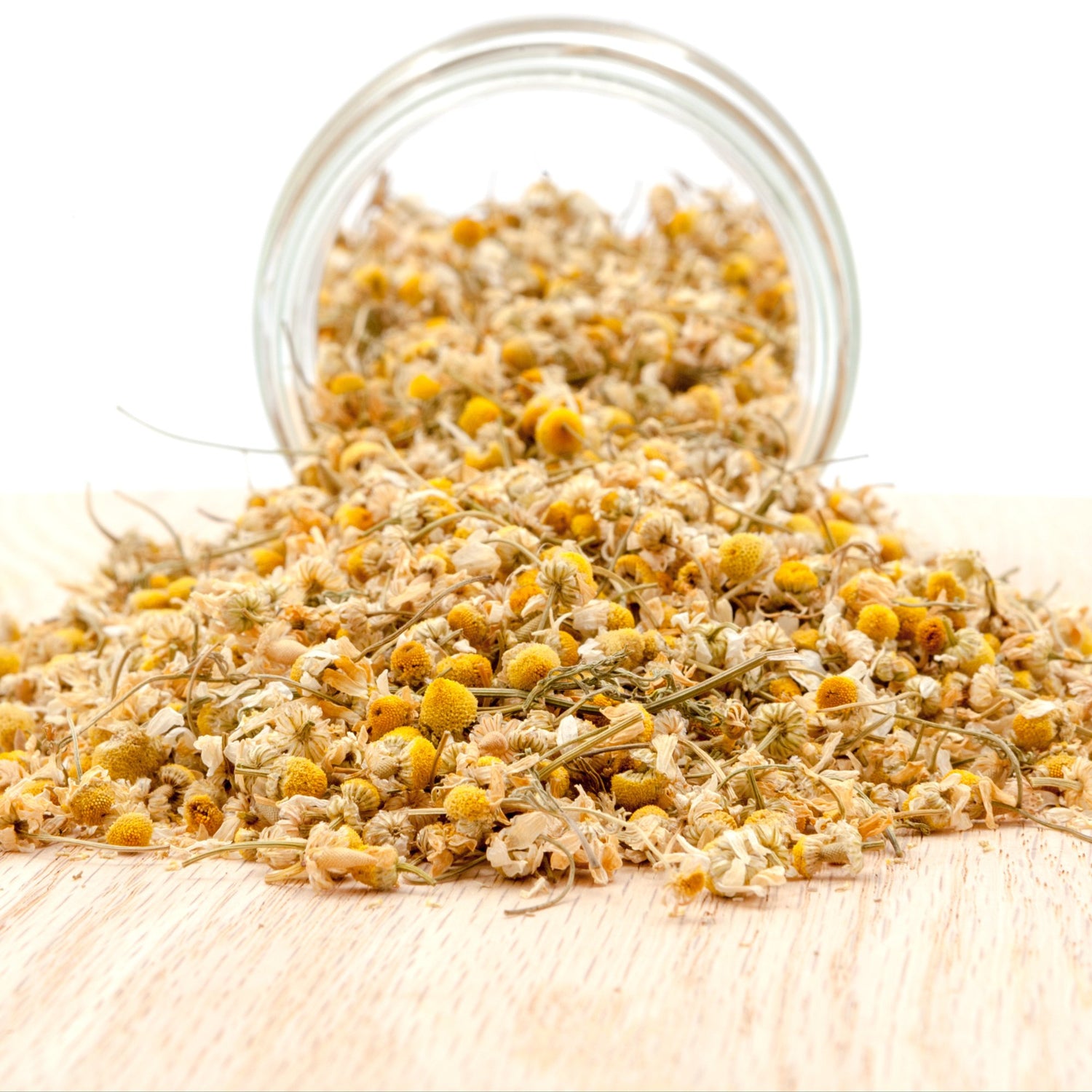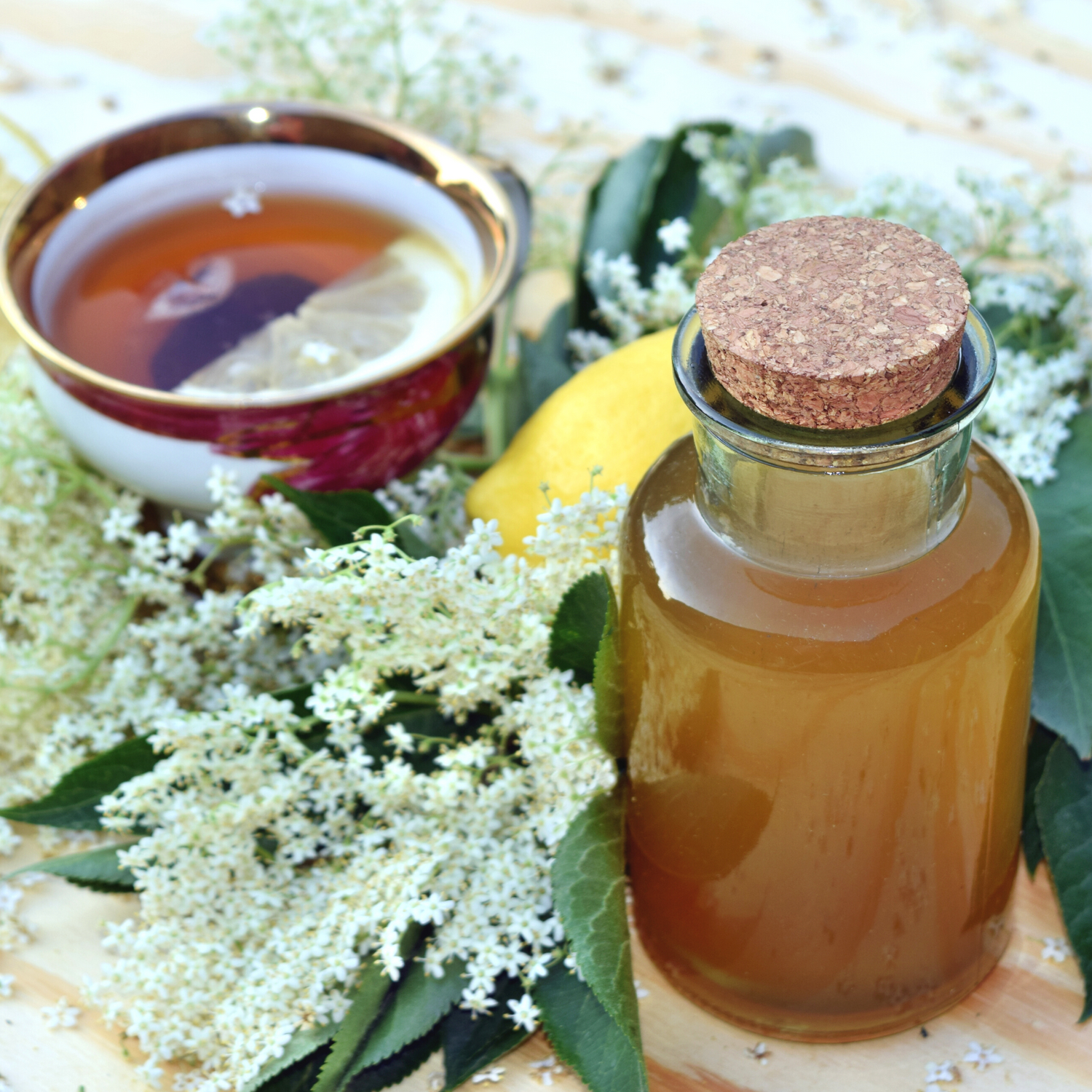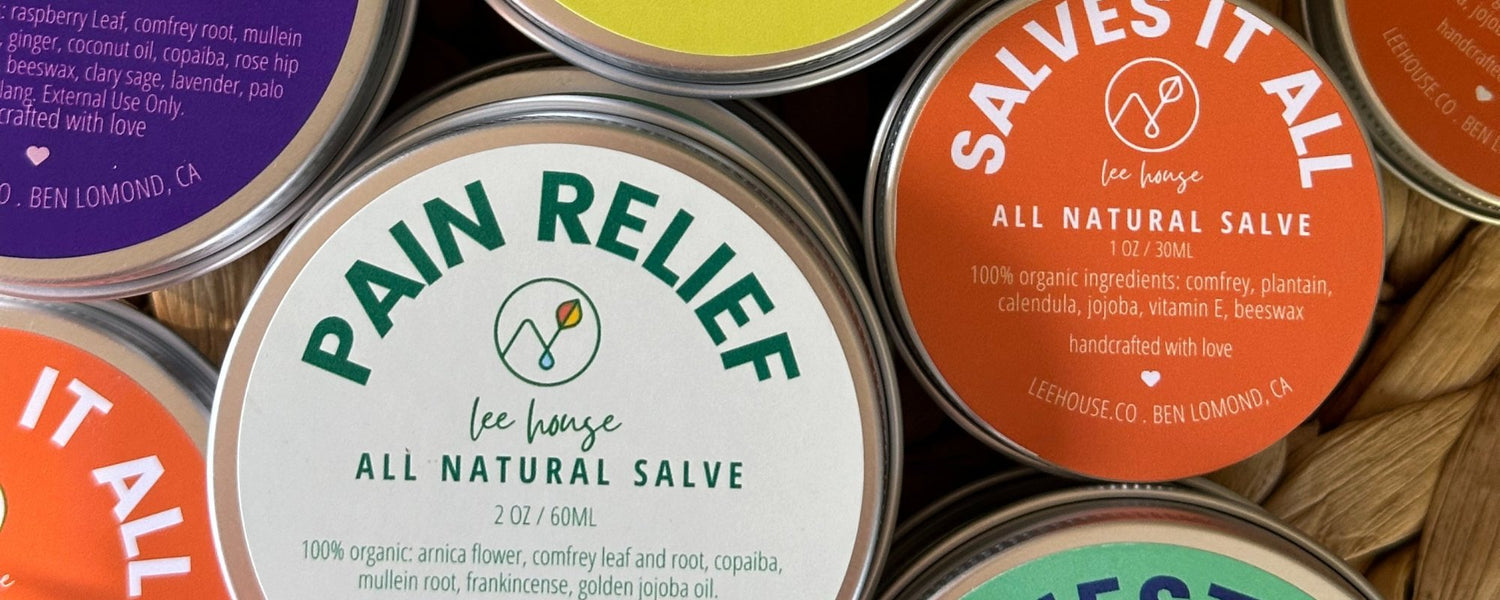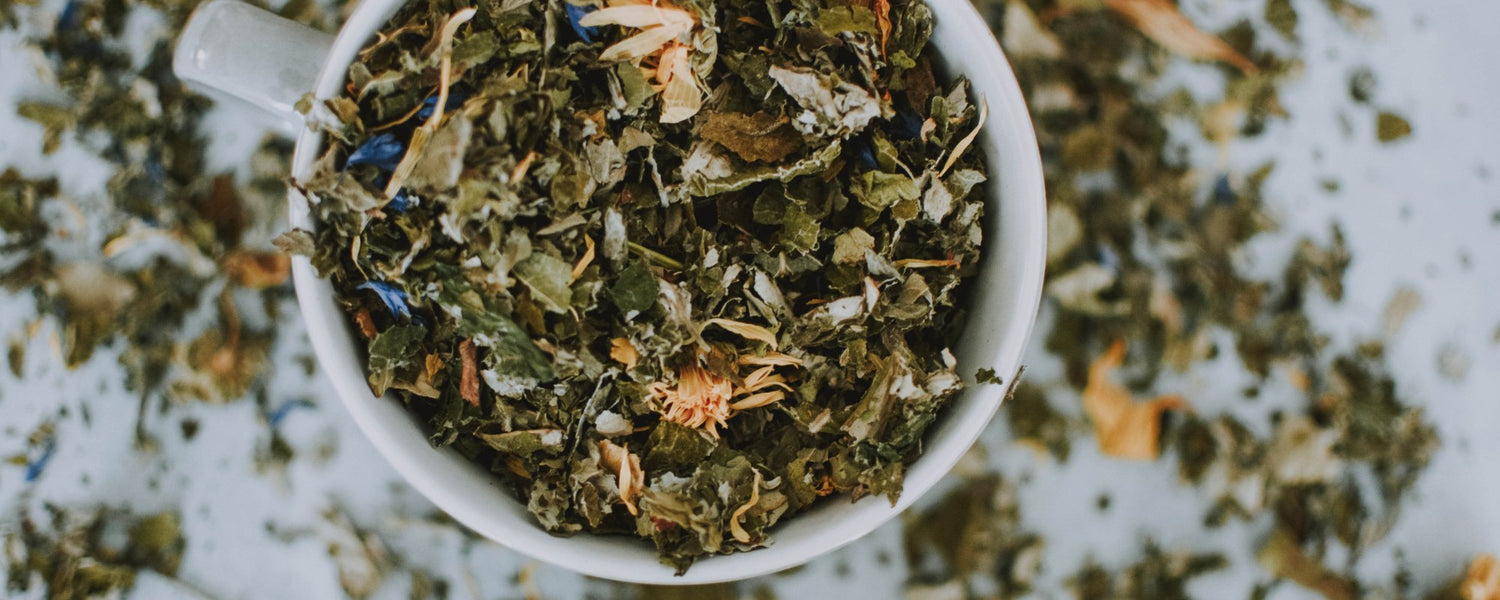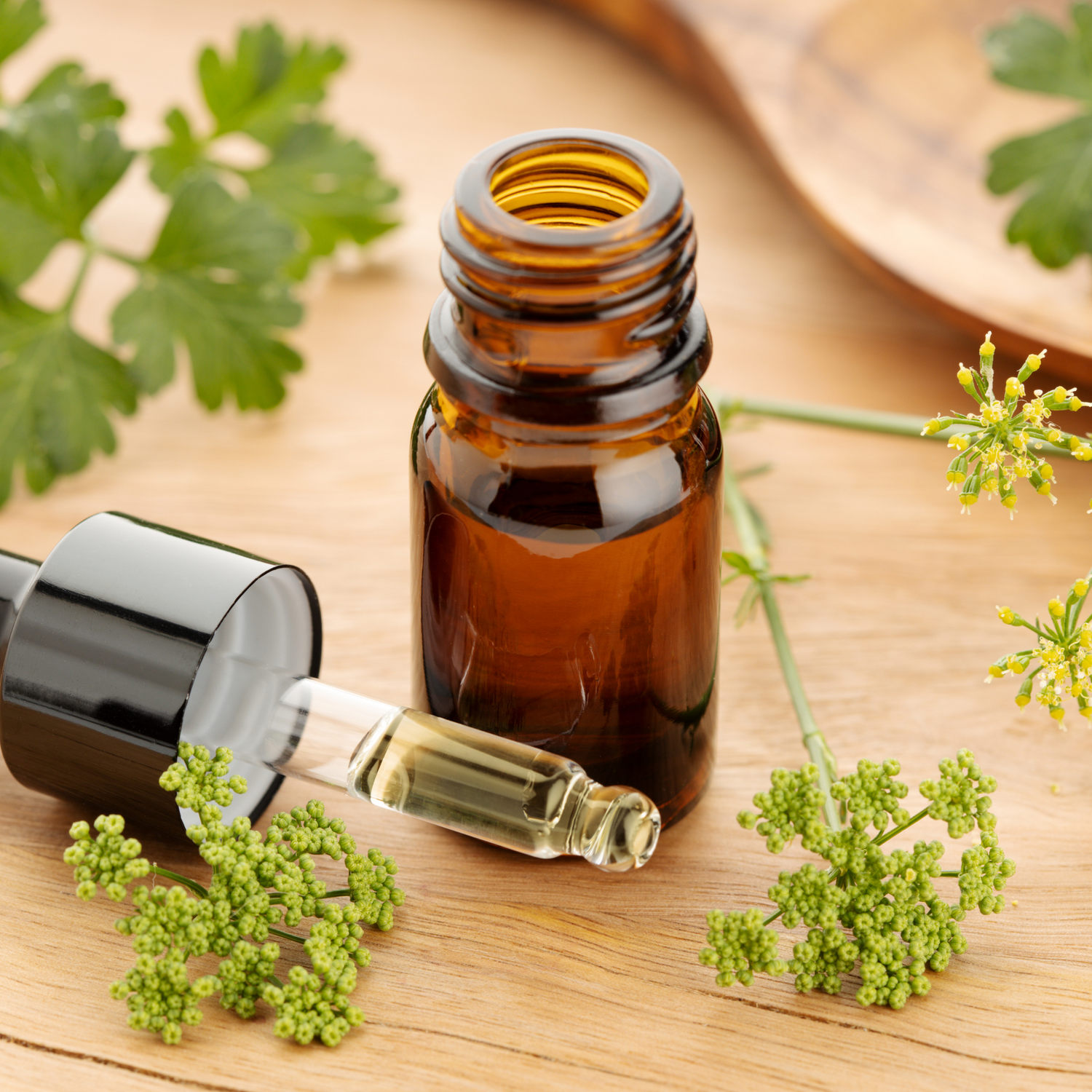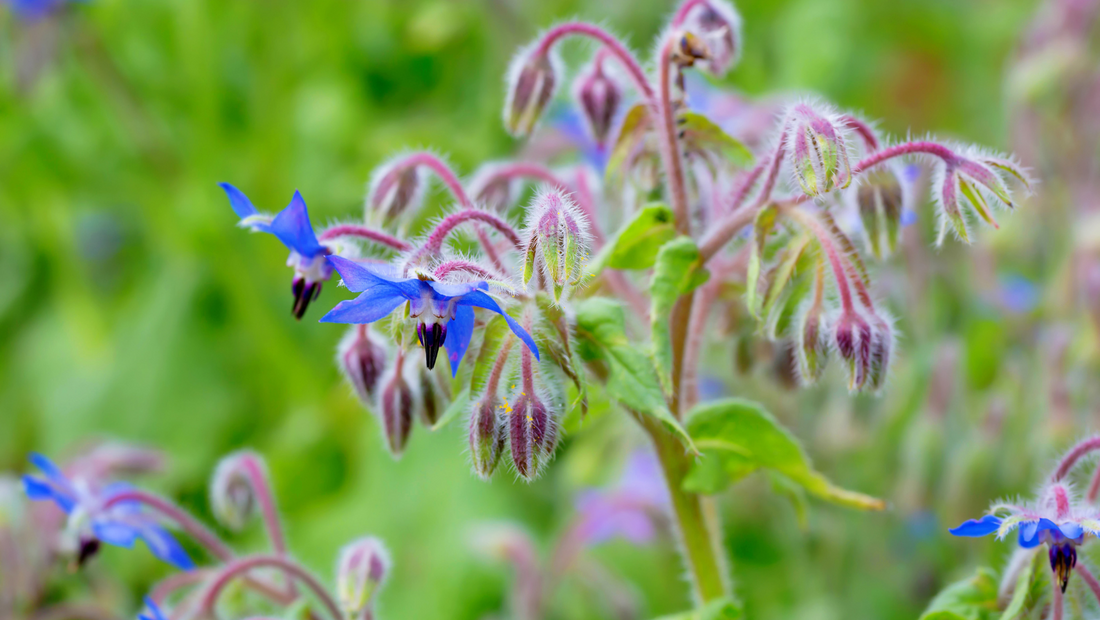
Borage: How to Grow, Care for, and Use this Pollinator's Delight
Share
Borage, also known as starflower, is a versatile herb that can be used in multiple ways in your garden and kitchen. Borage has a mild cucumber-like flavor. It's leaves and flowers are packed with essential nutrients, including minerals, vitamins, and antioxidants, making it a great addition to your meals and your garden beds!
Borage is an excellent addition to a regenerative or permaculture garden. As a companion plant, borage attracts pollinators such as bees and butterflies that help to pollinate other plants in the garden, increasing biodiversity and improving overall garden health. Its deep taproot brings up nutrients from deeper layers of soil, making it an excellent plant to grow alongside other plants in a guild. Borage is also a great chop and drop mulch plant, as its leaves and stems break down quickly and add nutrients to the soil, improving soil fertility. Additionally, borage has been found to be a natural pest repellent, especially against tomato hornworms and cabbage worms.
Here are some growing tips for borage:
Borage Facts:
- USDA Growing Zone: 3-9
- Soil pH: 6.0-7.0
- Sunlight: Full sun to partial shade
- Tolerant of Light Frost: Yes
- Soil Requirements: Well-draining soil, fertile, and rich in organic matter
- Spacing: 12-24 inches apart
- Mature height: 2-3 feet
- Propagation: Seeds, direct sow in the garden in early spring, or start indoors 4-6 weeks before the last frost. Borage is a prolific re-seeder.
Upon receipt of your new borage plant, immediately unpack your new plant. If the soil is dry to the touch, give it a small amount of water, then let it rest and recover from it’s journey for at least a day or two. It's always best to reacclimate your plant to being outdoors (assuming you will be growing it outdoors). After allowing the plant to rest for a day or two, start leaving it outdoors, you'll want to "harden it off" as you would a seedling - this allows the plant to gently reacclimate to living outdoors.
The easiest way to harden your new plant is to place it outside in a shaded, protected spot on warm days, bringing them in at night. Each day, increase the amount of sunlight the plant receives. Don't put tender seedlings outdoors on windy days or when temperatures are below 45° F.
How to plant borage: Choose a suitable location: Borage seedlings should be transplanted to a location that receives full sun or partial shade, and has well-draining soil. The ideal pH range for borage is between 6.0 and 7.0.
Water the seedlings: Water the seedlings thoroughly before transplanting them. This will help to prevent shock and reduce stress on the plants.
Dig a hole: Prepare the soil by removing any weeds or debris. Dig a hole that is deep enough to accommodate the root ball of the seedling, and wide enough to allow for the roots to spread out. The hole should be about twice the width of the root ball.
Gently remove the seedling: Carefully remove the borage seedling from its container, taking care not to damage the roots. You can do this by gently squeezing the sides of the container or by using a small trowel to loosen the soil around the edges.
Place the seedling in the hole: Place the borage seedling in the hole, making sure that the top of the root ball is level with the soil surface. Backfill the hole with soil, taking care not to bury the stem of the plant. Gently press down on the soil around the base of the seedling to help it settle.
Water: Water the borage seedling again after transplanting, making sure to water deeply to encourage the roots to grow down into the soil.
Mulch: Mulch around the base of the seedling with a layer of organic material such as straw or wood chips. This will help to conserve moisture and prevent weeds from growing.
Monitor: Keep an eye on the borage seedling over the next few days and weeks to make sure it is adjusting well to its new location. Water as needed to keep the soil moist, but not waterlogged.
By following these steps, you should be able to successfully transplant your borage seedlings and help them grow into healthy, mature plants.
If you are not familiar with the many uses for borage, visit our blog post at https://leehouse.co/blogs/blog/five-ways-to-use-borage, or contact us at leslie@leehouse.co.
With love, from LeeHouse
~Leslie & Darren




